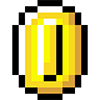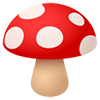-
Posts
1,442 -
Joined
-
Last visited
-
Days Won
8
Content Type
Profiles
Forums
Articles
Downloads
Gallery
Blogs
Everything posted by sundogak
-
-
-
The joystick setup within LB doesn’t do anything related to the games, only the LB interface. If you cannot use the controller in the games that is a setup problem in the emulator, not LB. Check your emulator settings.
-
I used the plugin long ago when first came out to generate the files with Game ID in file name (so worked with ScummVM). Earlier versions of plugin didn't have Retroarch option. Later the author added ability for RA format but you had to choose one or other. So I just kept manually generating as didn't want to mess stuff up. Initially I wanted RA for the shaders but now that ScummVM can now use (most) shaders I find I use native application for most part. Once you get hang of how it works making text files, importing into LB and connecting/downloading media from LB DB becomes a wash/repeat situation.
-
Yep, used to do that but the drop down box for games isn't updated accordingly (at least it wasn't prior). Thus, the issue is the EXE can run it but LB didn't give option for the newer game set. That could have changed as haven't used it in many years.
-
The internal LB version of ScummVM mentioned above is FAR easier to setup if just want to get things going quickly; however, LB uses the older 2.2 version vs the current version of 2.8. Some of the newer games ScummVM can run won't run under 2.2. You also won't be able to use RA core using this method. If don't care about that, then definitely go with LB way described above. However, you can use a standalone install of ScummVM that you can setup as separate emulator. Although more complicated initially to setup you have the ability to control which version of ScummVM you use as well as easier to use the eXoScummVM package, or use the Retroarch core. However, you cannot intermix the built in LB way of things and standalone, so have to decide how want to manage. Below is snap of setup for standalone version. Note the two check boxes for remove quotes and remove file extension. Your default command line should point to your INI file in your ScummVM directory (or wherever you told it to install). The "no-console" command tells it to not bring up the DOS window and the "-F" tells it to go full screen. -c "G:\Emulators\ScummVM\ScummVM\scummvm.ini" --no-console -f To run a game you have to place a pointer text file in EACH game directory of the ScummVM game main folder (this is what LB way of things automates). ScummVM command line looks at the file name and if it matches a game ID uses that to run the game. There is a plugin for LB to help with the pointer files, but if only have a few games can do it manually. The plugin can be confusing on the install instructions as they have not been updated for the more recent "DLL" version vs the older "EXE" version, so read the most recent comments first vs the main page. Make a backup of your INI files first before using the plugin. The pointer file (text file) uses the format of "gameID.ext". The extension can be anything as we tell LB to ignore it; however, make it consistent. I used "scummvm" (plugin uses "epicfail"). For example, the game "3 Skulls of the Toltecs" the pointer file will be "toltecs.scummvm". If you also want also be able to run the Retroarch version of ScummVM in addition to the standalone you have to type INSIDE the text file the game ID only. Setup the RA core as normal. See attached example. For whatever reason, Retroarch won't look at the file name like standalone ScummVM to decide how to launch game but instead looks inside the text file. Why they did the extra hoop is beyond me. toltecs.scummvm Game IDs can be found in the ScummVM application or in the ScummVM documentation (I found easier use APP). The LB plugin does the IDs automatically but not sure if it is updated with most recent changes as apparently the ScummVM team has changed some prior games IDs on newer versions like 2.8. You then import the text file as the "ROM" within Launchbox and then use either RA or standalone to run the game. Disadvantage: you have to override the game name to link to LB Games DB as LB won't (always) know what "toltecs" is when imports. As can see, can be time consuming initially so again using the LB internal version mentioned above is the quickest/easier way if don't care about older version and/or have games that version won't run. Additionally, I would stick with "cherry picking" games and version you want vs trying to install every ScummVM game available.
-
You could revert to your prior install by using the Tools, File Management, Restore Data Backup as LB makes a backup each time it shuts down and starts up. Look for one prior to update and revert. The zip files are stored in the LB\Backups folder. Also, for existing systems the importer was supposed to be turned off by default (was on mine), so sounds like a bug for you in that case.
-
-

Future Pinball Loader for Launchbox
sundogak replied to JaysArcade's topic in Third-Party Applications and Plugins (Released)
You won't be able to use the built in volume commands via LB or BB as once FP takes over it runs exclusively. This is why the LB Pause menu doesn't work either (at least easily). However, you can try mapping volume commands directly from within FP and see if that works. -
There is a Photoshop action file template in his download here under "Arcade 3D Boxes 2.0 Tutorial and Tools.zip"
- 1 reply
-
- 1
-

-
Yes, it will match the majority of them particularly if you have matched your games via the LB DB and they have a LB ID. Make sure to do a manual refresh of images - select all, F5. LB uses fuzzy matching of the title of game for matching and ignores anything in brackets. Special characters get replaced by underscore which (most times) LB will also match automatically. The few games that don't automatically match (~20 or so in my set when I just imported) were due to alternate names for the game vs what the image is named in my set. You can check the alternative names in LB by editing the game and looking under metadata. You can either rename the game to match the image (using the "set selected name as title" in LB) or manually match the image to your existing entry (easiest is open up Edit and images and drag/drop into window). An example of this is "Winter Olympic Games" which can be named a variety of ways like "Olympic Winter Games: Lillehammer '94". The naming used for this set is pretty "standard" so you will see this typical of most of the large image sets outside the LB DB.
-
-
-
There are some here along with a template inside the zip file. I have seen a few others in the Launchbox download section as well. I don't have a PSD template for carbon ring so not something I can help with.
-
-
-
-
Thanks for pulling that together. Hopefully that will reduce the requests for logos already completed.
-
Three methods (although you said you had the bios files already): 1) download MAME bios only pack, it will have it in there, or 2) download a split or unmerged MAME set and hod2bios.zip will be in the set, or 3) if have a merged MAME set and don't want to do #1 or #2, then manually or using CLRMAME Pro or similar tool assemble the needed files with appropriate checksums and place in zip file called hod2bios.zip then place in the RA DC directory. They will be in various zip files in merged set such as the Naomi.zip file.
-
Yes, running via flycast RA core. hod2bios.zip I had in DC directory was from 2019 as don't typically update stuff in DC directory. However, I tried it with updated 262 MAME set version bios (in DC directory) and ROM and worked fine.
-
hotd2.zip and hod2bios.zip are needed to run the game with the RA flycast core. Without knowing anymore details hard to say other than works on my system. The hod2bios.zip should be in this directory ..\Retroarch\system\dc
-
You have to log into Discord. Goes right to page. Try this invite page. https://discord.com/invite/37FYaUZ Again you have to have account in Discord.
-
The PSD is in the very first post of this thread that Viking included in his pack.


















.thumb.png.dfb6d8399ee20b855c0a77a2d6e7ed25.png)








































